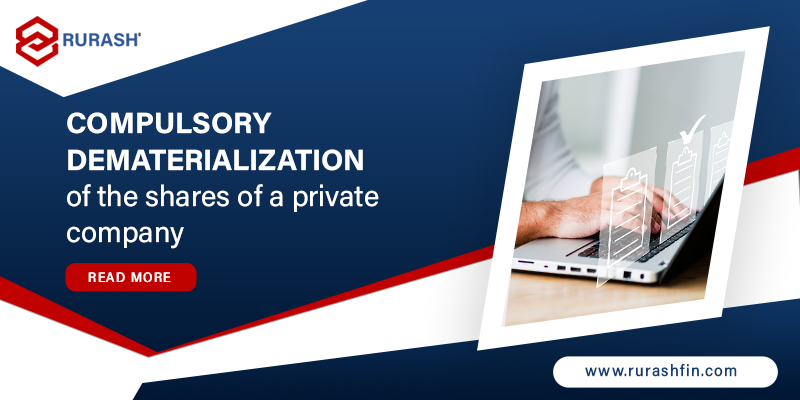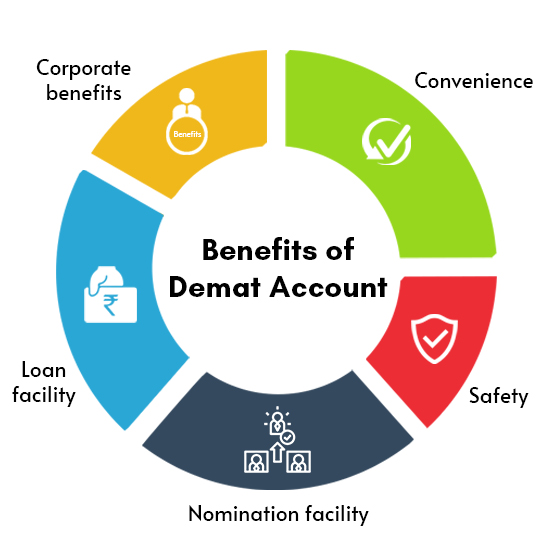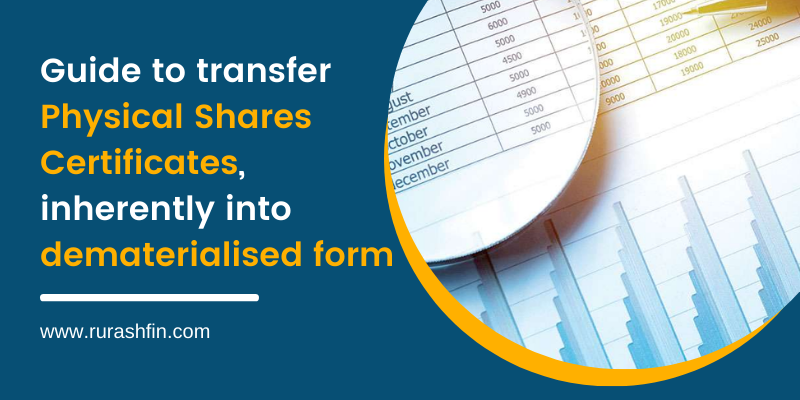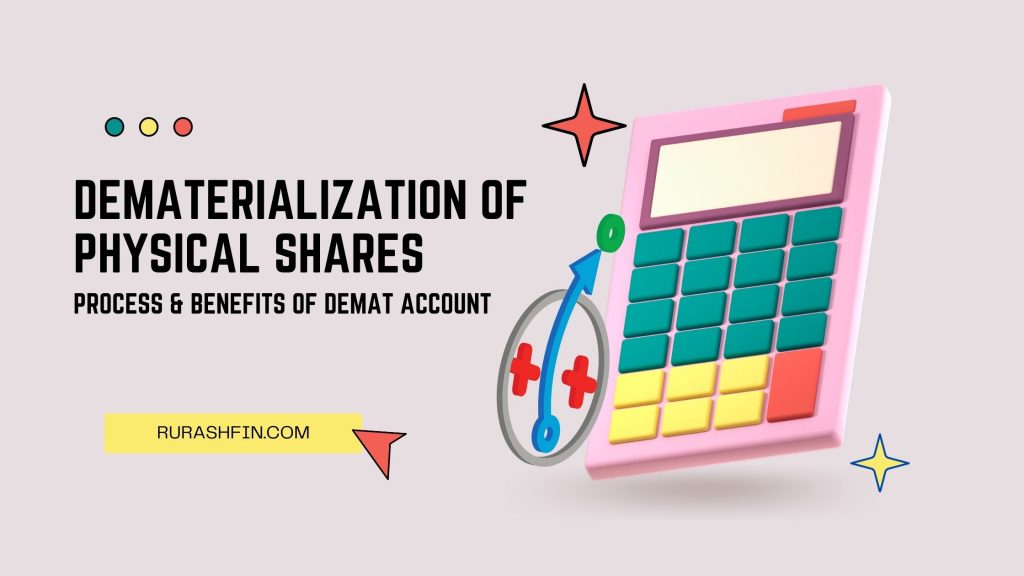Gone are the days when you were required to keep physical copies of the shares you had purchased – if you wanted to capitalise on them at a later date.
With digitisation taking over all areas of our life, the way we hold and trade shares has undergone a radical shift – and physical shares now need to be dematerialised for you to retain share ownership.
Why It’s Time to Move Away from Physical Shares
Physical shares are paper certificates representing ownership in a company. They were once the standard form of share ownership, representing an investor’s stake in a company. While they have served their purpose, they come with challenges like high administrative costs and logistical issues.
Common Challenges Faced with Physical Shares
Investors holding physical shares often encounter a myriad of challenges, including:
- Maintenance of Records: Keeping track of physical certificates and maintaining accurate records can be a daunting task, especially for investors with multiple holdings.
- Risk of Loss or Damage: Physical certificates are susceptible to loss, theft, or damage, which can lead to complications in asserting ownership and trading.
- Difficulties in Transfer: Transferring ownership of physical shares is often cumbersome and time-consuming, involving paperwork and manual processes.
- Inefficiency in Corporate Actions: Participation in corporate actions like dividends and stock splits can become complicated and delayed due to the physical nature of share certificates.
With the strides we’re making in the digital landscape, timely dematerialisation of securities is the only way to secure your share ownership without dealing with the hassles that physical shares bring.
Dematerialisation provides a safer and more efficient method for managing investments. It reduces the complexities associated with physical certificates significantly, ensuring that investors can leverage technology to enhance their financial journeys.
This transition is not merely convenient but also ensures transparency, efficiency, and security while holding or trading shares.


The Benefits of Having a Demat Account
Opening a Demat account is a smart and efficient way to manage your investments. Whether you are a seasoned investor or just getting started, dematerialisation offers multiple advantages that simplify and enhance your investment experience. Here are some key benefits:
- Convenience: Managing your investments becomes seamless with a Demat account. Gone are the days of physically visiting brokers to settle transactions. All activities, including buying, selling, and transferring shares, are conducted online, making it highly convenient. You can access your account anytime, anywhere, allowing for swift and efficient portfolio management.
- Safety: One of the primary reasons for opting for physical share dematerialisation is the safety it offers. Physical certificates are susceptible to theft, loss, or damage due to natural calamities or mishandling. A Demat account, on the other hand, stores your securities digitally, eliminating such risks. Additionally, robust security features such as encryption and two-factor authentication ensure your account remains safe from unauthorised access.
- Nomination Facility: A Demat account provides the option to assign a nominee. This means that in case of your absence or any unforeseen circumstances, the nominee can manage your investments. The nominee is granted full access to your holdings and can handle transactions on your behalf, ensuring continuity and safeguarding your financial interests.
- Loan Facility: With a Demat account, you can leverage your holdings to secure loans. Many financial institutions offer loans against the securities and shares in your account. You can pledge your investments as collateral to get quick and easy financing, providing liquidity without having to sell off your long-term investments.
- Corporate Benefits: Holding shares in a Demat account ensures that you receive all the associated corporate benefits directly. Dividends, interest, bonus shares, rights issues, and refunds are automatically credited to your Demat account without any delay or manual intervention. This not only saves time but also ensures that you don’t miss out on any perks that come with holding specific securities.
- Reduction in Paperwork: One of the most significant benefits of dematerialisation of shares is the complete elimination of paperwork. Physical certificates require tedious documentation, which can lead to errors or delays. With a Demat account, all records are maintained electronically, simplifying the entire investment process. This also means faster transactions, as there is no need for manual verification or postal delays.
- Easy Portfolio Management: A Demat account allows you to view and manage all your holdings in one place. Whether it’s shares, bonds, government securities, or mutual funds, everything is stored digitally and can be monitored easily. It offers a consolidated view of your investments, helping you make informed decisions and track your portfolio’s performance effortlessly.
The Benefits of Dematerialisation
The advantages of dematerialisation of securities are manifold. Some of these include:
- Enhanced Security: One of the primary advantages of the dematerialisation process is the significant reduction in risks. With physical shares, the risk of loss, theft, or damage is ever-present. Demat accounts provide a secure environment where shares are protected against such risks. When shares are held electronically, investors no longer have to worry about physical damage to their certificates
- Increased Liquidity and Settlements: Trading shares in electronic form makes buying and selling faster and more efficient. Investors can execute trades quickly, ensuring better price discovery and reducing the time it takes to convert investments into cash. This means better liquidity, increased safety while you trade, and transparency
Dematerialised shares can typically be settled within T+2 days (trade date plus two days), enhancing cash flow and investment opportunities, as funds are available sooner compared to physical shares.
Physical share dematerialisation can lead to lower transaction costs compared to physical shares. Without the need for stamp duty and handling fees associated with physical certificates, investors can save on costs when trading shares. Physical share certificates are susceptible to forgery, which poses a significant risk for investors. By converting shares to demat, this risk is minimised as the electronic records maintained by depositories provide an added layer of verification. Investors holding shares in demat form can effortlessly participate in corporate actions such as rights issues, bonus issues, and dividend payments. These benefits are automatically credited to the demat account, simplifying the process for shareholders. In India, shares held in a demat account can make it easier to manage capital gains tax. With proper record-keeping through the depository, tracking holding periods for tax calculations becomes less complicated, allowing better tax planning. With the rise of digital platforms, investors can access their demat accounts anytime and anywhere, allowing for more flexible management of their investments. This convenience is especially valuable for busy professionals and those managing multiple investments. Dematerialisation eliminates the clutter of physical documents, providing a streamlined method for maintaining records. Investors can easily generate reports and statements directly from their demat accounts for personal finance management or compliance purposes.Lower Transaction Costs
No Risk of Forgery
Participation in Corporate Actions
Improved Tax Planning
Accessibility
Streamlined Record-Keeping


What Does a Dematerialisation Process Entail?
The process of dematerialisation is quick and simple when you have all the documents needed in place. Here’s a step-by-step guide that you can follow:
Step 1: Choosing a Depository Participant (DP)
Selecting a reliable depository participant like RURASH Financial is the first step in the dematerialisation process. As a DP, we act as an intermediary between you and the depository, facilitating the demat account services.
Step 2: Opening a Demat Account
A demat account is essential for holding your shares in electronic form and can often be opened simultaneously, along with a trading account.
Step 3: Submitting a Dematerialisation Request Form (DRF)
To initiate the physical share dematerialisation process, investors need to fill out a Dematerialisation Request Form (DRF) and submit it to us along with your physical share certificates.
Step 4: Document Verification and Processing Time
Once the documents like your physical share certificates, KYC, and DRF are submitted, we verify them. The typical processing time for dematerialisation is around 7-15 working days.
Step 5: Receiving Dematerialised Shares
Once the verification is complete, the shares are credited to the investor’s demat account, allowing for easy trading and management.
The Documentation Required for Physical Share Dematerialisation
To ensure a smooth dematerialisation process, you’ll need the following documents:
- A duly filled DRF
- The physical Share Certificates to be dematerialised
- KYC documents (Aadhaar, PAN, etc.)
Timely dematerialisation is crucial. Investors must be aware of the dematerialisation of shares’ last dates for specific companies that they hold the shares for. Certain companies set deadlines for converting their physical shares to demat, failing which shareholders may lose their voting rights or dividends. Keep an eye on official announcements for such critical dates.
Common Pitfalls You Can Avoid While Dematerialising Physical Shares
While opting to dematerialise your shares, it is important to do it right. Here are some common pitfalls you can avoid if you’re transferring your shares to digital for the first time:
- Incomplete Documentation
One of the most common delays in dematerialisation occurs due to discrepancies in documentation. Ensure that the names, signatures, and addresses on your share certificates match your current details exactly. Any inconsistencies may require additional verification and delay the process. Ensure that all required documents are submitted in full to prevent delays.
- Choosing the Wrong DP
Choosing a depository participant without adequate research can land you in hot water if there are hidden fees included that you’re not prepared for, or if they have no customer support to resolve your doubts and queries. Research and select a depository participant with a reputation for reliability and accessibility.
- Missing Deadlines
It’s important to stay aware of the dematerialisation of shares last date mandated by SEBI. Failing to act within the prescribed timeline may result in your physical shares becoming non-tradable and limit your ability to sell or transfer the shares.
- Neglecting KYC Norms
Always ensure that your KYC details are up to date, as they are crucial for the dematerialisation process.
Not Comparing Dematerialisation Charges
Different DPs may charge varying fees for dematerialisation. While these dematerialisation charges are usually nominal, it’s a good idea to compare and choose a DP that offers the best services and rates. Remember that the cheapest option may not always provide the best service.
Overlooking Joint Holdings
If your physical shares are jointly held, ensure that the order of names in the demat account matches the order on the physical certificates. Any discrepancy here will require additional documentation or modification requests, causing further delays.


Dematerialisation of Shares for Private Companies
Private companies are also subject to dematerialisation regulations, particularly under the Companies Act. However, the process may differ slightly from public companies.
Private companies in India operate under specific regulatory frameworks, particularly regarding shareholding and transfers. The Companies Act, 2013, mandates that private companies can also issue shares in dematerialised form, ensuring compliance with regulations while enhancing shareholder convenience.
Key Differences Between Dematerialisation of Shares of Private Companies and Public Companies
While the dematerialisation process for private companies mirrors that of public companies, some distinctions exist:
- Transfer Restrictions: Private companies often have restrictions on the transfer of shares, which must be adhered to even in dematerialised form.
- Limited Marketability: Unlike public shares, shares of private companies are not traded on stock exchanges.
- Documentation Requirements: The paperwork involved in the dematerialisation of shares of private companies may vary, with additional agreements often required between shareholders.
Dematerialisation Charges - What Does It Cover?
Dematerialisation is a key step in transitioning from physical shares to a digital format. This offers numerous advantages like increased liquidity and enhanced security. However, it’s important to be aware of the dematerialisation charges associated with this process.
Understanding these costs helps investors make informed decisions.
- DP Charges: Depository Participants (DPs) charge fees for processing your demat request. These charges can vary widely among DPs and may depend on the number of shares being dematerialised. Typically, DPs charge a one-time fee for converting physical shares into electronic form. It’s always a good idea to be aware about the fee structure of your chosen DP before proceeding with the dematerialisation process.
- Transaction Fees: Once you have a demat account, some DPs may charge transaction fees for each buy or sell order you place. This fee can be a flat rate or a percentage of the transaction value. Be sure to inquire about these charges, as they can impact your overall investment returns.
- Annual Maintenance Charges (AMC): Most DPs levy annual maintenance fees for maintaining your demat account. This charge is typically nominal, but it can accumulate over time, so factor this into your long-term cost analysis.
- Additional Charges: Other potential charges may include fees for issuing duplicate statements, providing physical statements, or even penalties for non-compliance with regulatory requirements. Always ask your DP for a comprehensive list of all applicable charges.
A quick chat with our team can help you determine the dematerialisation charges, should you choose RURASH Financial as your depository participant.
Comparing Charges Across Depository Participants
When selecting a DP, it’s crucial to compare the dematerialisation charges and overall fee structure of various providers. Some may offer competitive rates but could have hidden fees that increase costs later. A transparent fee structure can significantly improve your overall investment returns.
- Assessing Value for Money: While lower fees may seem appealing, consider the level of service provided, including customer support and ease of access to your account. Sometimes, paying slightly higher fees for a reliable and efficient service can be worth the investment.
- Read Reviews and Get Recommendations: Online reviews and recommendations from fellow investors can provide insight into the reliability of different DPs and their fee structures. This information can help you make a more informed choice.
- Understanding Fee Structures: Ensure you understand the various components of the fee structure before committing to a DP. Look for clarity in their pricing policy, and don’t hesitate to ask questions about any charges that seem unclear.


Common Misconceptions About Dematerialisation
The world of finance is not without its myths. There are several misconceptions also surrounding dematerialisation of shares that need to be addressed if you’re holding on to physical shares.
Myth #1: Demat accounts are prone to hacking and data theft.
Fact: With various security measures in place, demat accounts are generally more secure than physical certificates. Some of these measures include two-factor authentication, encryption, and regular monitoring. Investing in a demat account also mitigates risks associated with physical share ownership, like loss or theft.
Myth #2: Dematerialisation is only for ‘Big Investors’
Fact: This is a common misconception. Dematerialisation of shares is for all investors, regardless of the size of their portfolio. Whether you hold a few shares or a large portfolio, demat accounts are designed to simplify shareholding for everyone. In fact, small investors benefit significantly by eliminating the risks associated with holding physical certificates, such as theft, damage, or loss.
Myth #3: Dematerialisation is just a trend and not necessary.
Fact: In today’s digital age, dematerialisation of securities is not merely a trend but an essential step towards a more efficient and secure investment landscape. It is also mandated as per the Securities and Exchange Board of India (SEBI). The transition to electronic records simplifies ownership transfer and enhances transparency.
Myth #4: Dematerialisation is a complex process.
Fact: While the dematerialisation process involves certain steps, it is relatively straightforward. With the help of our team at RURASH Financial, investors can navigate the process with ease.
Myth #5: Physical Shareholders Have More Control Over Their Shares
Fact: Some investors believe holding physical certificates gives them more control. In reality, physical share dematerialisation gives you greater control over your investments. With a demat account, you can instantly buy, sell, or transfer shares at the click of a button without the burden of physical paperwork, ensuring you’re in control at all times.
Myth #6: Dematerialisation Leads to Higher Costs for Investors
Fact: While dematerialisation charges exist, they are generally nominal and vary by depository participant (DP). The benefits of dematerialising shares such as reduced transaction fees, faster trading, and no risk of physical damage or losses far outweigh these charges. In the long run, demat shares are much more cost-effective and efficient for investors.
Myth #7: Dematerialisation is Complicated and Time-Consuming
Fact: The dematerialisation process is designed to be straightforward and user-friendly. Opening a demat account and submitting your Demat Request Form (DRF) can be done online through your depository participant (DP). The processing time is generally quick, especially if all your documents are in order. Many investors have successfully dematerialised their shares in just a few days.
Myth: #8 There are hidden costs associated with demat accounts.
Fact: While there are certain charges, we provide a clear breakdown of all fees upfront. Being informed about the dematerialisation charges can help you plan effectively and make an informed decision.
Myth #9: You Cannot Convert Jointly Held Shares into a Demat Account
Fact: Jointly held physical shares can be easily converted into a demat account. However, it’s important that the order of the names on the share certificates matches the order in the demat account. If this is not the case, additional documentation may be required to complete the process.
Myth #10: Dematerialisation is Only for Shares
Fact: While shares are the most commonly dematerialised asset, other financial instruments like bonds, government securities, mutual funds, and debentures can also be held in a demat account. Investors can manage all their investments digitally in a single, secure place.
The Future of Dematerialisation
As we move further into the digital age, the dematerialisation of securities is undergoing a significant transformation. With trading becoming more convenient through digital means, it’s reshaping how shares are owned and exchanged. Fintech companies are leveraging technology to create user-friendly platforms that simplify the dematerialisation process. These platforms provide seamless access to demat services, making it easier for investors to convert their physical shares into electronic form.
Potential Developments in Demat Processes
As the financial landscape evolves, so do the processes that surround demat accounts. Some anticipated developments include:
- Enhanced Security Measures: With cyber threats on the rise, the focus on security within demat accounts is paramount. Advancements in biometric authentication and advanced encryption to safeguard investors’ assets can be expected
- Integration with Other Financial Products: The future will likely see deeper integration between demat accounts and other financial instruments, such as loans against securities and alternative investment funds. This integration will provide investors with a holistic view of their portfolios.
- Global Standardisation: As more investors engage in international markets, there’s a growing need for standardised demat processes. This will facilitate cross-border investments and make the dematerialisation of shares a smoother experience.

Have more questions? Quick Apply
Summing It Up
Dematerialisation today is no longer an option but a necessity. By understanding the dematerialisation process, investors can navigate the transition from physical certificates to electronic records with ease. With the ongoing innovations and digital transformations in the financial sector, demat accounts are becoming indispensable for those looking to maximise their investment potential.
Are you ready to take the next step in your investment journey? Our team of experts is here to guide you through the dematerialisation of shares last date and help you understand the various dematerialisation charges involved. Whether you’re looking to transfer your physical shares or explore alternative investment avenues, we are here to provide personalised assistance tailored to your needs.
Why should you convert from physical to Demat shares? Dematerialization of shares has various benefits, some of which have been elaborated on below:
- 1. Fewer risks: Physical shares are subject to loss, damage, and theft risks. It is also susceptible to fraud and manipulation by unscrupulous persons. With a Demat account, investors can store all their investments or shares in a safe and secure digital depository.
- 2. Convenient storage: Keeping tabs on all physical shares and their performance is tedious and time-consuming, especially if the investor holds a large volume of shares. A Demat account empowers the investor to easily access and monitor its holdings and relative performance.
- 3. Reduced transaction costs: Dealing with physical shares involves additional charges that are difficult to determine in advance. These additional costs may be handling expenses, stamp duty, and similar outlays. Whereas in the Demat account, the only charge payable is the brokerage charge, which is informed in advance.
- 4. Reduced transaction time: Transacting with physical shares involves sending shares to the company or the registrar to get the shares transferred in the investor’s name. This is a lengthy process, sometimes taking months to get the shares transferred. With a Demat account, all the investor needs is a delivery instruction slip (DIS) to transfer their securities, which occurs almost instantaneously. Additionally, dematerialization mitigates the risk of inefficiencies such as delayed settlements and transactions, thus ensuring swift transactions.
- 5. No odd lot problems: Before Demat accounts, investors could not buy or sell shares in odd lots. The introduction of Demat accounts has removed such inconvenience, allowing investors to trade in odd lots and even buy or sell a single share.
- 6. Nomination facility: A Demat account provides nomination facilities to investors as per the process described by the depository. This will allow investors to appoint a nominee to operate their accounts in their absence.
- 7. Loan collateral: Investors can pledge their Demat accounts’ securities to secure a loan against securities. The shares held, liquidity, and acceptability will help investors procure loans at low-interest rates.
- 8. Corporate activities: If a company held by the investor declares a dividend, the benefits are automatically credited to the beneficiary’s Demat account. In addition to this, corporate actions like stock splits, bonus issue, or right shares are automatically updated in the Demat account of all the company’s shareholders.
- 9. No TDS: The Central Board of Direct Taxes (CBDT) has granted dispensation from tax deducted at source (TDS) when Demat accounts make payments. This also means that no TDS is deducted from the interest received by investors on bonds and securities.
- 10. Easy Accessibility: A Demat account is easily accessible through multiple platforms. This includes devices like smartphones, computers, or any other smart devices.
FAQ's Demat
Usually, it takes around 30 days. But in case your process is taking more than 30 days, you can contact your DP. If he is unable to help you, you can send a complaint to an investor complaint cell of CDSL or NSDL.
For such a transfer, it is required to open another Demat account. Once done, fill and sign the ‘Account Closure Form’ and submit it to your existing DP. In that form fill the details of your new Demat account. Your DP will do a balance transfer and close your old Demat account.
Yes, there is no restriction on the number of Demat accounts. You can open many Demat accounts.
No, there is no need to keep any small balance; you can also keep zero balance in your Demat account.
Yes, it is mandatory to provide your bank details. These bank details are given to the issuer company for crediting any payable amount into your account. Hence, we recommend you provide your active bank account details.
No, as per the current rules, Demat account can’t be operated as ‘either or survivor’. Hence any changes done in the joint Demat account should be signed by all the joint account holders.
NSDL has decided eligibility criteria for working as a DP. All the DPs get approved by NSDL after getting a certificate of registration from SEBI. The services offered, service charges, and service standards rendered may differ among different DPs.
Yes, for this, you need to fill Rematerialization Request Form (RRF) and submit it to your DP. Once your DP receives the request, you will get share certificates from the R&TA.
In the Demat account, the ‘Delivery instruction slip’ for all debit transactions, and the ‘Receipt instruction slip’ for every credit transfer are there. Through standing instruction, you can avoid giving a receipt whenever credit is expected in the account.
Yes, it is possible to dematerialize tax-free bonds even in lock-in conditions. The process is like that of Demat of shares.
Following are steps involved in the process of recovery of IEPF shares.
Step 1: Filing to Authority by Claimant.
Step 2: Submitting the Claim to the Company.
Step 3: Submission of Claim from the Company to the IEPF Authority.
Step 4: Refund from IEPF Authority to the Claimant.
Easiest Step: Connect with the team now for RURASH for the Recovery of Shares.
A shareholder can reclaim any such investment from IEPF as the IEPF authority maintains the details of all the accounts.
If the dividend declared by the company remains unpaid/unclaimed for a period of seven years, the company is required to transfer the same to IEPF. Further, all shares in respect of which dividend has not been paid/claimed for seven consecutive years or more is required to be transferred by the company in the name of IEPF.
Dematerialisation is the process of converting physical share certificates into electronic form. This shift to digital shares eliminates the risks associated with physical ownership, such as loss, theft, or damage, and streamlines share transactions.
Dematerialisation offers numerous benefits, including enhanced security, increased liquidity, and simplified management of shares. With physical share dematerialisation, investors can easily buy or sell shares, manage their portfolio, and gain access to a more efficient trading environment.
The charges for physical to demat conversions vary depending on the depository participant you choose. It may include processing fees for converting physical shares, transaction fees for buying or selling shares, and annual maintenance fees for your demat account. It’s essential to review the fee structure of your chosen DP before starting the dematerialisation process of your shares.
The last date for dematerialisation varies based on regulatory announcements and company policies. It’s crucial to stay updated on these dates to avoid missing the opportunity to convert your shares. Regularly check with your DP or financial advisor or keep an eye on your emails to ensure you’re informed.
To start, you need to choose a DP and open a demat account. Next, submit a Dematerialisation Request Form (DRF) along with your physical share certificates and KYC documents. The DP will then handle the verification and processing. After successful dematerialisation, your shares will reflect in your demat account.
Yes, private companies may have additional requirements when it comes to the dematerialisation of their shares. These could include obtaining board approvals or following specific compliance norms. Always consult with an expert or legal advisor for tailored guidance.
In case you lose your physical share certificates, you can apply for a duplicate certificate through the company’s registrar.
Generally, there are no immediate tax implications. However, it is essential that you consult a tax advisor for custom guidance.
A great thing about dematerialising your securities is that your assets remain secure, as they are held with the depository, not the DP. If your depository participant has gone bankrupt, make sure you choose a reputable DP like RURASH Financial that has a proven track-record and ensures transparency.
If you fail to dematerialise your physical shares before the stipulated deadline, you will not be able to sell or transfer your shares. As per SEBI guidelines, trading in shares is allowed only in demat form, and physical share certificates will become non-transferable after the dematerialisation of shares last date. However, you can still hold the shares and earn dividends, but for liquidity and trading purposes, conversion to demat is mandatory.
Yes, even if your shares are in physical form, you will continue to receive dividends. However, tracking and managing multiple share certificates can become cumbersome. By completing the physical shares’ dematerialisation, your dividends will be directly credited to your linked bank account, ensuring easier management and timely receipt of your earnings.
If your physical shares are jointly held, they must be dematerialised into a joint demat account. The names of the holders must be in the same order as they appear on the physical certificates. If you wish to change the holding structure from joint to single ownership, you will first need to initiate a transfer in physical form before starting the physical share dematerialisation.
Most physical shares, whether they are equity shares, preference shares, or debentures, can be converted into demat form. However, certain restrictions may apply for shares of private companies due to their regulatory framework. Some older physical certificates may also require additional documentation if the company has undergone mergers, acquisitions, or name changes since the certificates were issued.
Our team at RURASH Financial can help streamline the dematerialising of your shares while keeping with the regulations, making the process easier for you.






